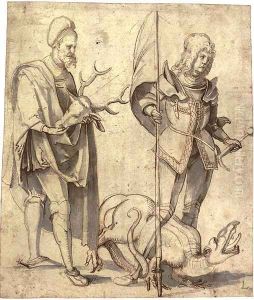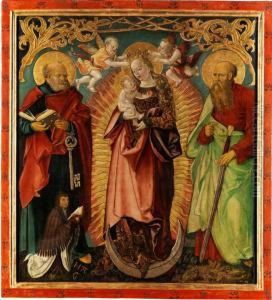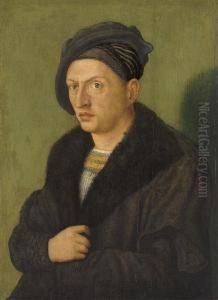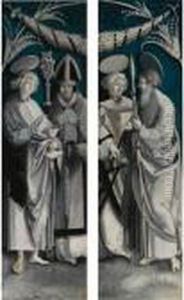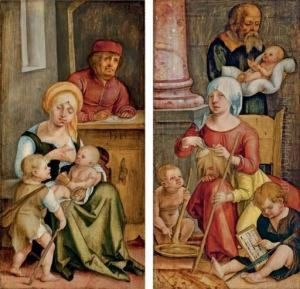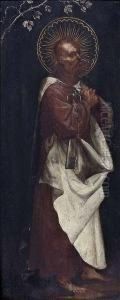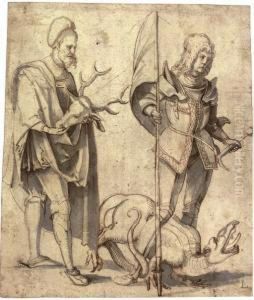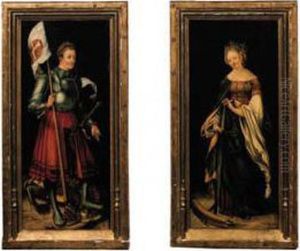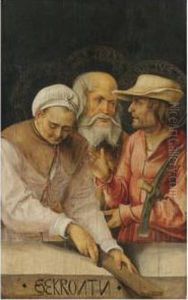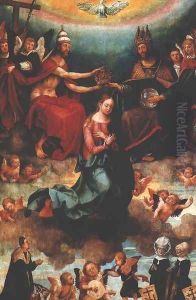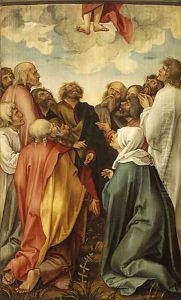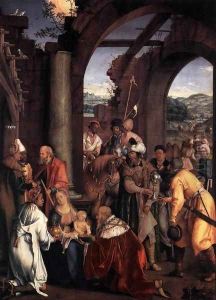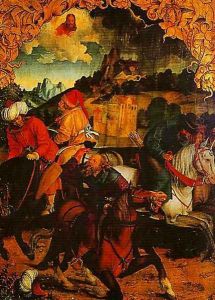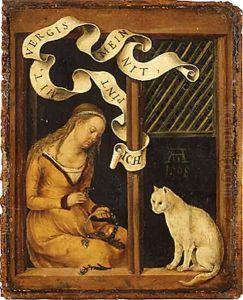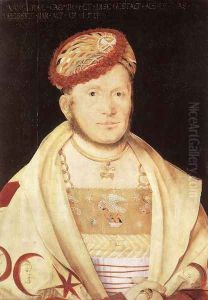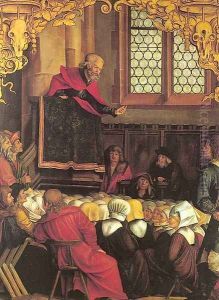Hans Suss von Kulmbach Paintings
Hans Suss von Kulmbach, also known as Hans Suess or Hans Süß, was a German artist who played a significant role in the Northern Renaissance. Born around 1480 in the town of Kulmbach in Bavaria, he is often associated with the region due to his moniker, which differentiates him from other artists named Hans. His exact date of birth is not documented, and little is known about his early life.
Kulmbach likely received his early training in the workshop of a local painter before moving to Nuremberg, which was a vibrant artistic and cultural center at that time. He became a student of the prominent German painter and printmaker Albrecht Dürer. While Dürer's influence is evident in Kulmbach's work, particularly in his meticulous approach to detail and his use of vibrant colors, Kulmbach developed his own distinctive style that set his work apart from his teacher and contemporaries.
Kulmbach's oeuvre includes altarpieces, religious panels, and portraits. One of his most notable works is the St. Mary's Altarpiece (1511), created for the Church of St. Mary in Krakow, Poland. This altarpiece displays his skill in composition and his ability to create figures that are both expressive and serene, a testament to his mastery of the late Gothic and early Renaissance styles.
Despite his considerable talent, Hans Suss von Kulmbach did not achieve the same level of fame as some of his contemporaries during his lifetime. Nonetheless, his contributions to the art of the Northern Renaissance have been increasingly recognized by art historians in recent years.
Kulmbach's career was relatively short, and he died in 1522 in Nuremberg. His works can be found in various museums and collections across Europe, serving as enduring examples of the artistic excellence of the period and region in which he worked.
